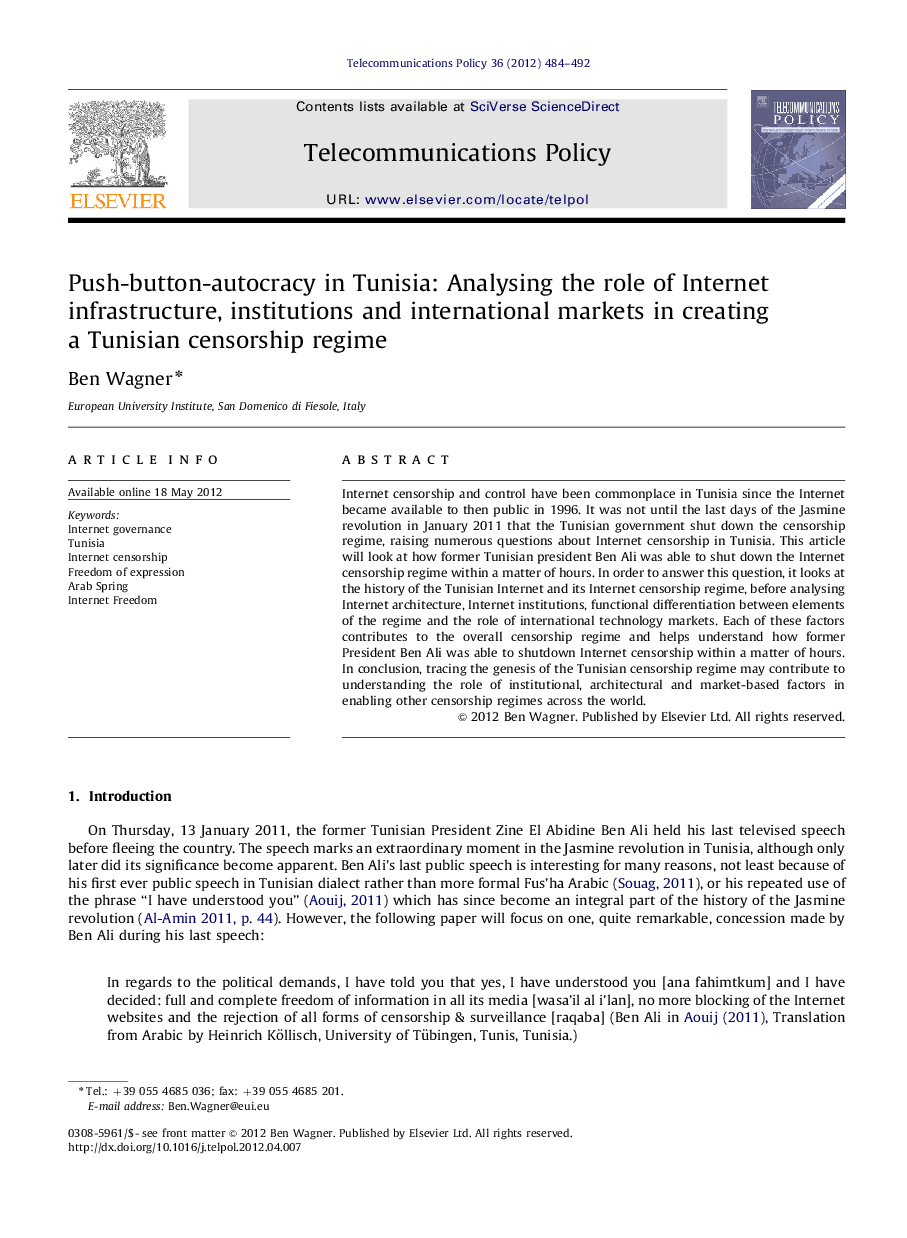| Article ID | Journal | Published Year | Pages | File Type |
|---|---|---|---|---|
| 556853 | Telecommunications Policy | 2012 | 9 Pages |
Internet censorship and control have been commonplace in Tunisia since the Internet became available to then public in 1996. It was not until the last days of the Jasmine revolution in January 2011 that the Tunisian government shut down the censorship regime, raising numerous questions about Internet censorship in Tunisia. This article will look at how former Tunisian president Ben Ali was able to shut down the Internet censorship regime within a matter of hours. In order to answer this question, it looks at the history of the Tunisian Internet and its Internet censorship regime, before analysing Internet architecture, Internet institutions, functional differentiation between elements of the regime and the role of international technology markets. Each of these factors contributes to the overall censorship regime and helps understand how former President Ben Ali was able to shutdown Internet censorship within a matter of hours. In conclusion, tracing the genesis of the Tunisian censorship regime may contribute to understanding the role of institutional, architectural and market-based factors in enabling other censorship regimes across the world.
► Internet censorship and control changed during the revolution in Tunisia. ► Changes to Internet censorship were implemented within a matter of hours. ► Centralised Internet infrastructure & institutions enabled swift change. ► Compartmentalised censorship regime repeatedly adapted to challenges. ► Tunisia could not have created this regime without international technology & services.
